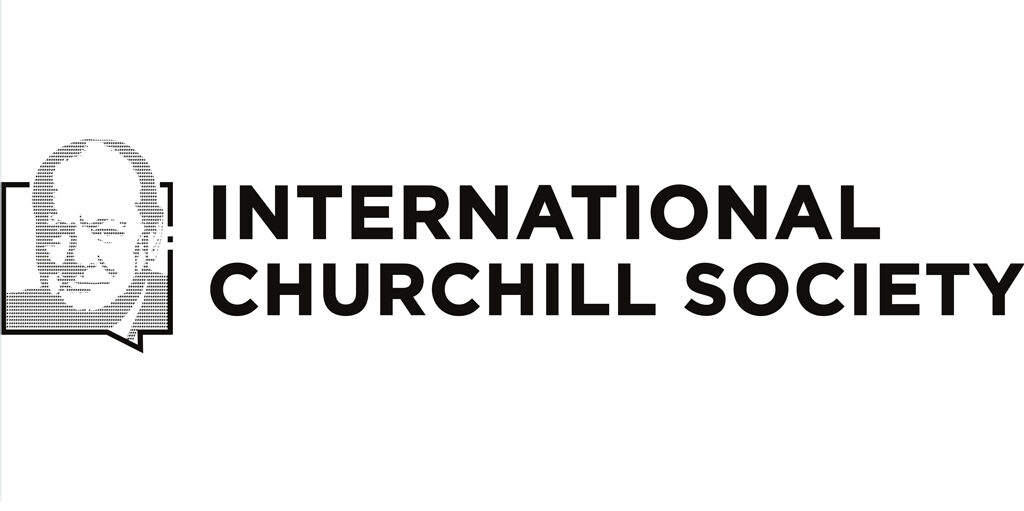
Finest Hour 133
Bibliography – “COHEN CORNER”

Winston Churchill, Parliament Square, London © Sue Lowry & Magellan PR
April 7, 2015
Finest Hour 133, Winter 2006-07
Page 41
By Christopher Bell
TOTAL IMMERSION in the Cohen Bibliography of Churchill’s works suggests it may rank with the Complete Speeches and Collected Essays in its service to Churchiif scholarship.
Bibliography of the Writings of Sir Winston Churchill, by Ronald I. Cohen. London: Continuum, 3 vols., 2184 pages, advance price $990, member price $800. About 100 copies are left at this writing.

2025 International Churchill Conference
When Ronald Cohen announced in Finest Hour 51, Spring 1986, that he was preparing an entirely new Churchill bibliography, he had already been researching the subject for nearly five years. If he had known then that his Bibliography of the Writings of Sir Winston Churchill would not be published for another twenty years, he might have had second thoughts about the wisdom of undertaking this task. Now that the work is published, in three volumes totaling 2183 pages, the reasons for the delay are clear: Cohen was determined to give Sir Winston Churchill the bibliography he deserved.
Sir Martin Gilbert describes the book in his foreword as “a high point —and surely a peak—of Churchill bibliographic research…in every way the Mount Everest of the subject.”
Bibliographer Cohen does not just update Frederick Woods’ Bibliography of the Works of Winston Churchill, the standard reference work for collectors, dealers and scholars since its first edition in 1963: he makes Woods obsolete.
Readers of the new bibliography will be struck by the vast number of works unearthed by Cohen that Woods simply did not find. Thus, for example, by 1908, Woods’ numbering had. My African Journey as A12. In Cohen, it is already A27. Into Battle, published 1941, is Woods A66 and Cohen A142. Woods’ final entry in this section of works entirely by Churchill is Frontiers and Wars, his A143/1, which is Cohen A274. Cohen also benefits from the passage of time, which allows him to add another thirty main entries to Section A published since Woods’ final edition (plus innumerable additions of editions, issues and states of works unknown to Woods). The total number of main entries in Cohen’s Section A is 333.
Perhaps more important is the depth of detail, nicely illustrated by his treatment of the African Journey. In Woods, the entry is simply Al2, with no sub-numbering to identify other editions or issues. Cohen, on the other hand, provides a separate listing and full bibliographical details for the first British issue, Colonial issue (both cased and in wrappers), the three American issues, the Canadian issue of first edition sheets, the attractive and scarce 1910 Newnes paperback edition, as well as the 1962 Neville Spearman edition (not to mention seven post-Woods editions and issues published between 1962 and 1992).
Woods’ entry for the Second World War, to give one other example, included three editions/issues (in 15 pages); Cohen describes thirty-four editions/issues in 150 pages. (Twenty one of these had actually been published prior to Woods’ last edition, but only three were described by him.)
The bibliographical descriptions benefit from their substantive uniformity. Each one includes a title page transcription, a collational statement, the breakdown of the contents, a description of the typography and paper, the binding, publication and printing information, locations, and cross-references to other bibliographies (including Woods), where such referrals can be found. Cohen also provides Churchill dealers and collectors for the first time with descriptions of dust jackets, including changes, however slight, from one printing to another (very important to collectors because jackets can so easily be switched from a later to a first printing volume).
Another major contribution is the thoroughness of Cohen’s bibliographical descriptions. Every work in Section A, whether volume, pamphlet or leaflet, is bibliographically described. Woods never provided equal treatment for pamphlets and leaflets, even though he had clearly gone to great trouble to find them (and Cohen has found and described well over 100 new ones).
In the case of the scarce Shall We Commit Suicide?, for example, the title page transcription makes it clear that there were at least two printings of the first edition. In the case of the much more common publication of Churchill’s 20 August 1940 speech (known best for its tribute to “The Few”), a full description of colours, typography and paper make it clear that there were at least five different combinations of paper stocks and wrappers used in the printing of 300,000 copies of the first and only printing of the pamphlet, for HMSO by the Baynard Press, probably because of wartime paper rationing.
Although it is common bibliographic practice to include location information, Cohen provides it to Churchill collectors and dealers for the first time. It is easy enough to locate a copy of The Story of the Malakand Field Force, but most libraries and online catalogues do not indicate, for example, whether they hold first state copies (without the domestic errata slip); and none will indicate whether the catalogue in the back of the volume is a 12/97 or a 3/98 catalogue; or whether, as in the case of the copy held by the Legislative Library in Halifax, the book has no catalogue. Nor will any library indicate whether its copy of the Colonial issue of the Malakand includes the Indian or the domestic errata slip, in the unlikely event that errata slip information is included at all.
Cohen also provides an immense amount of information about translations, particularly in Section A. Unlike Woods, who simply listed the languages into which Churchill’s works were translated (including such nonexistent languages as Belgian, Brazilian and Braille), Cohen provides the foreign title (in its original alphabet, whether Cyrillic, Hebrew or other, or transliterated if originally in Japanese or Korean ideographs), the name of the publisher and the city and date of publication, together with (on occasion) the price at which the work was originally offered.
Where the work has been published in a new edition or issue, or simply been reprinted, he provides the corresponding information for the new appearance and, where he has uncovered details of the foreign publishing arrangements, he provides these as well. On occasion, as in the case of the Second World War, where French editions were published in France, Belgium and Switzerland by different publishers, these are all noted, as are the several German appearances of that work in Switzerland and Germany.
STRUCTURAL INTEGRITY
The structure of the new bibliography offers surprises. Like Woods, Cohen Sections A and B deal respectively with works wholly or substantially by Churchill and works by other authors that include a Churchill contribution: a foreword, preface, or introduction. A few items have been reassigned from one section to another.
In the case of Charles, IXth Duke of Marlborough, Woods B23 becomes Cohen A98, on the grounds that the Churchill contribution is clearly dominant. In the case of Beating the Invader, a World War II leaflet that Woods placed in Section A, Cohen shows conclusively that most of the text was in fact prepared by the Ministry of Information. Churchill was invited by Duff Cooper, the Minister of Information, to provide an introduction to the leaflet, and it is thus relocated to Cohen’s Section B. It is also interesting to note that Cohen identifies two separate issues of this leaflet in English: one by the Ministry of Information and the other by the Ministry of Public Security, as well as a Welsh translation.
The rest of the Cohen bibliography is radically different from Woods and far more helpful to the researcher or collector. Woods’ Section C included all periodical contributions, whatever their nature. Cohen’s Section C also lists periodical contributions, but only of letters or telegrams filed as a reporter from the battlefield, articles, and book reviews. Speeches or broadcasts have been given their own home in Section E, while all other contributions to the periodical press, whether letters to the editor or other correspondents, press releases, minutes, etc., are gathered together in Section G.
Similarly, the volumes, pamphlets and leaflets by other authors that comprised Woods’ Section D are redistributed by Cohen into two separate sections, one (Section D) containing oratorical material, and another (Section F) containing letters and other miscellaneous material.
Once again, Cohen is both far more thorough and extensive. The earlier bibliographer identified 528 periodical contributions. Cohen has quadrupled that number, locating and describing 2178 such contributions (706 in Section C, 223 in Section E and 1249 in Section G).
Equally importantly, where the Woods entries for major serializations, such as Mr. Churchill’s Book (mis-labelled The World Crisis by Woods— The Times did not use that title), The Second World War and A History of the English-Speaking Peoples, are limited to a single line, providing only the name of the periodical and a range of dates, Cohen provides the actual dates of publication, the title and every subtitle, and the pagination for each part. He includes the same information for each of the British and principal Canadian serializations for the volumes of Mr. Churchill’s Book (approximately forty parts for each volume, in comparison to the single line for each volume in Woods). For The Second World War, both the daily and weekly American appearances are given, in addition to the British serialization details (about eighty entries for each volume, in comparison to the single line for each volume in Woods).
The series of articles on Churchill’s impressions of the United States and Canada (Cohen C330) presents another interesting comparison of the two bibliographies. Woods provides a list of each of the titles of the twelve parts with dates and pagination as published in the Daily Telegraph; however, he eliminates any reference to the North American serializations, which are of obvious relevance given the subject matter. Moreover, the Daily Telegraph serialization was not even the first appearance of the series. Cohen again provides all titles, sub-titles, dates and pagination for the prior appearances in the Washington Post, the New York World, and the Los Angeles Times, as well as the later Canadian appearance in the Family Herald and Weekly Star. He also provides each of the subtitles, corrects Woods’ pagination errors, gives the references to the subsequent publication of the articles in the Collected Essays, and supplies rich additional notes relating to the fascinating negotiation of the arrangements for the publication of the series.
SUPPORTING INFORMATION
One of the most extraordinary features of the Bibliography is the presentation of background information relating to what Cohen describes as the “circumstances of publication” of each work in Section A or C for which he has been able to uncover such data.
Some of this information is available in the document volumes of the official biography, but most had to be dug out of Churchill’s unpublished private papers and publishers’ or agents’ archives. Cohen’s impressive research effort enables him to describe Churchill’s thoughts about his writings, his progress at various stages, negotiations with publishers, royalty/contractual details, debates with publishers over titles. {The World Crisis, for example, might have been published as The Great Amphibian if Churchill’s views had prevailed.) In addition to the historical value of the information, it adds highly readable detail to the necessarily drier bibliographical description. Along the way Cohen demolishes many longstanding myths. It has long been known, for example, that The Second World War was first published in the United States, but Cohen shows that this was not for the reasons commonly thought.
The Cohen bibliography is a remarkable achievement. It is easy to forget that writing was Churchill’s main source of income. But unlike most professional writers, Churchill also had a remarkably rich and varied political career, which further contributed to his momentous output. Ronald Cohen is the first scholar to capture the full scope of Churchill’s literary activities—not only his many books, speeches, and articles, but the thousands of letters, war despatches, memoranda, and lesser items he produced during his long life.
This is a model of how a bibliography should be written: with meticulous attention to detail, exhaustive research, a deep respect for the subject, and a literary flair of its own. It was a long time in the making, but it was worth the wait.
Dr. Bell is an associate professor of History at Dalhousie University, Halifax, Nova Scotia and a member of ICS Canada.
*The time has come gracefully to retire “Woods Corner,” which honored the original Churchill bibliography. Cohen is much too young to have a “Cohen Corner,” so we have simply named our ongoing bibliophiles column “Bibliography.”
Subscribe
WANT MORE?
Get the Churchill Bulletin delivered to your inbox once a month.



